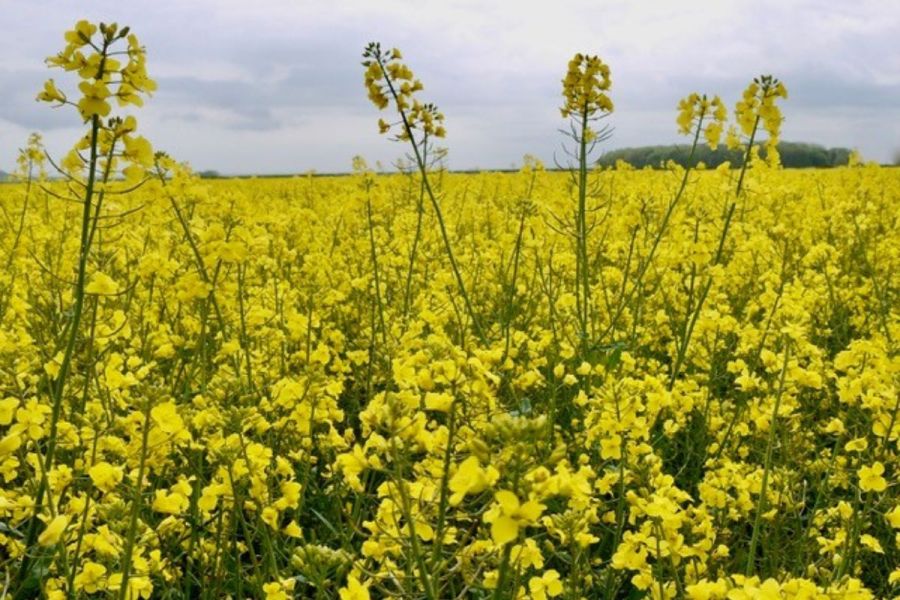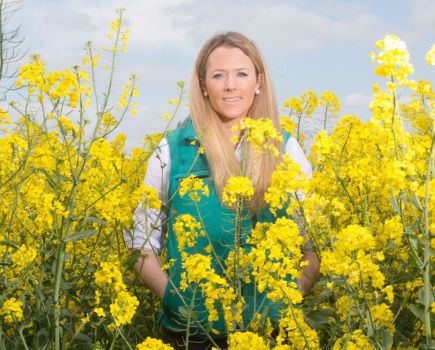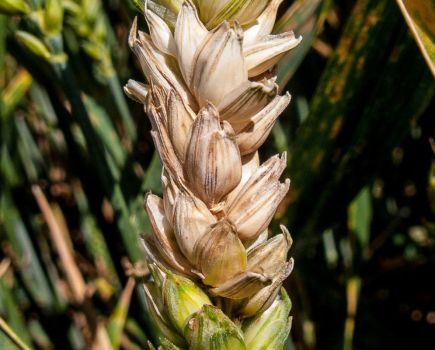Data from Europe has revealed climatic changes could be affecting crop growth and limiting oilseed rape yields, leaving experts debating whether growers should stick or twist when it comes to drilling dates. CPM finds out more…
“The secret to high yields is to get more seeds per square metre from the plants.”
By Charlotte Cunningham
The past few years have been a rough old ride for oilseed rape – a crop which has kept itself firmly in the headlines due to ongoing challenges with the mighty mouth of the cabbage stem flea beetle and the limited options to protect both crops and growers.
But where there is challenge, there’s often opportunity, and farmers have become resilient in their approaches to keep the valuable break crop in the rotation.
However, despite best efforts, growers were met with another challenge this autumn, with many experiencing the wettest since the washout of 2019. This is in tandem with monitoring data showing a downward trend in yields over the past five years, undoubtedly leaving many scratching their heads about the best way to approach the crop.
The state of play for OSR, and how to tackle it in a changing climate, was the topic of discussion in a recent webinar hosted by LSPB.
“Looking at OSR during the past 30 years, there has been both evolution of the crop and – over more recent times – a struggle and decline in crop area,” says Chris Guest, managing director at LSPB. “Despite that, genetic gain and yield potential has still continued to improve over this time.”
Looking at this timeframe in more detail, developments have included the introduction of F1 hybrid types in the 90s, and a significant increase in market area – peaking at just shy of 750,000ha in 2012, he explains. “Obviously, the crop has had its fair share of challenges over this time too, with the neonicotinoid ban in 2014 and then further loss of chemistry to help growers protect crops from flea beetle damage.”
The increasing frequency of extreme weather patterns at key timings has also been a major challenge, and the combination of these factors have undoubtedly impacted yields, notes Chris. “On farm, we’ve noticed a sort of flatlining of yield, which goes against what we’ve seen in terms of the development and improvement of genetics in trials.
“So essentially, I think many growers have found themselves in the position that the genetic improvement is there, but they’re not seeing that realisation into farm situations due to multiple external challenges.
“The problem with this is that with the total crop area down, we have a position where the UK becomes a net importer of rapeseed, having been a net exporter, and there’s some challenges and questions on food security there.”
So is there a solution to this? And how best can growers approach OSR in a changing climate?
Chris says although there are no clear-cut answers as such, looking at crop management strategies – in particular, sowing dates – could help to put growers in a better position. “We’ve been doing a lot of work on later sowing recently, and also considering whether the increase of growers targeting that really early window is a reason for limited yields,” explains Chris. “If we think about the on-farm situation, most rape is now drilled in early August with some growers now even getting crops in at the end of July if they can, in a bid to get crops up and away to avoid the worst of any flea beetle damage.
“However, when we look at trials data, the average drilling date for crops tends to be around 25 August, so it could be that this contributes to the great disparity between performance in fields and performance in trials.”
As such, turning to our European colleagues could provide some good evidence for altering the approach, says Chris.
With more than 40 years’ experience in OSR, Dr Ute Kropf from the University of Applied Sciences in Kiel, Germany has been working on the University’s trial station since 2000, and during that time has collated some interesting data on sowing dates and crop performance, which could be applied to UK farms due to the climatic similarities.
Since 2008, Ute has been looking at OSR yields and says that up until 2014, yields were consistently around 5-6t/ha. Since then, they’ve dipped considerably. “In our experience, we believe that one of the main reasons for this is the difference in winter vegetation between the pre- and post-2014 periods,” she explains.
This change in performance has led Dr Kropf to look deeper into the causes of this difference in winter vegetation, and it all comes down to climatic changes.
The trials site at Lindenhof historically has experienced very cold winters, with temperatures plummeting to -15oC. At this temperature, OSR plants typically experience 2-3 months of dormancy. However, due to the rising temperatures since 2014, this dormancy period has been as short as 4-5 weeks – meaning crops keep growing for much longer during the autumn and winter and get going again much quicker in the spring, explains Ute.
So what does all of this mean for yield? “The secret to high yields is to get more seeds per square metre from the plants, and this is in part determined by the number of buds set in the spring,” she explains.
“Therefore, it’s really important to understand the ‘developmental rhythm’ of the crop. Yield is determined early on in the crop’s life cycle and with the back end of the year now tending to be warmer than usual, this yield is now being set in the winter rather than the spring.”
Delving deeper into the development of the crop, it all comes down to the accumulated thermal temperature, she explains. “Each pair of leaves requires between 120-150oC of thermal heat, plus 150oC for emergence, meaning about 600oC is required to get to the six-leaf stage.”
At this point in the growth cycle, OSR moves into bud differentiation, which continues until the plants reach the beginning of stem elongation at around the 10-12-leaf stage. “When the total thermal temperature reaches around 1200oC, the plant reaches maximum bud density. After this point, the plant starts to reduce weak side tillers and flower buds to get enough food for stem elongation – which begins after this point – and growth in spring,” explains Ute.
Applying the physiology to the data, during the traditional, colder winters, crops would have typically reached this stage at around mid-late March. However now, this is happening a whole two months earlier in January. “Some of the early sown rape can elongate as early as November/December,” she adds.
The impact of this is that crops have a shorter differentiation period and begin stem elongation with maximum bud density having already been reached due to the higher temperatures. “What’s more, buds are being formed in poorer conditions than they would be if they were forming in the spring, and all of this has a direct impact on yield.”
As a result, the optimum sowing date at the trials site is now somewhere in the last week of August, she adds.
So what does this mean for farmers? Ute and her team have modelled the data seen at Lindenhof on average temperatures in Cambridge, to help UK growers to get a better understanding of how changes to sowing date could benefit yield.
Comparing the temperature data between the two locations, Ute says Cambridge has seen 230oC more thermal time in the autumn/winter (September to December) and 200oC more in the later winter/early spring (January to March) during the past two years.
In terms of what this means for drilling date, based on the data this equates to an ‘ideal’ drilling date in Cambridge of around 18/19 September to ensure OSR plants are at the optimum growth stage by the end of the year – considerably later than the ‘normal’ OSR sowing date for a lot of growers, she notes.
Of course, it’s not just a case of simply switching drilling dates. There are a number of risk factors to consider, including what later drilling means for potential flea beetle damage as well as the potential that a wet autumn could significantly impact drilling days. There are also important varietal considerations too, adds Chris.
While the reason why is unknown, something Ute has discovered is that TuYV varieties tend to start stem elongation earlier as they need less thermal time, so this is something worth noting and taking into consideration when selecting and managing varieties, says Chris. “We know in the UK there’s a large percentage of varieties with TuYV resistance being grown. So we’re going to look more at what the influence of that genetic tool is in terms of giving crops even larger canopies into the winter.”
LSPB has a number of trials in the ground this year, sown in both early and later slots, with results ready for further discussion this harvest.
“Our aim at the moment is to find out whether or not this really is a viable alternative option and not just a marketing story,” says Chris. “But what we can say for now is that delaying sowing into September and utilising historic farm climatic data to enable this could be part of the strategy moving forward.
“This isn’t the end story — we don’t have the answers yet. But we’re on a journey to find them,” he concludes.
This article was taken from the latest issue of CPM. Read the article in full here.
For more articles like this, subscribe here.
Sign up for Crop Production Magazine’s FREE e-newsletter here.




